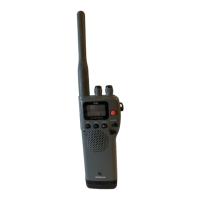SECTION 1
1.1
1.2
SECTION 2
2.1
2.2
2.2.1
2.3
2.3.1
2.3.2
2.3.3
2.3.4
2.3.5
2.3.6
2.3.7
SECTION 3
3.1
3.2
3.2.1
3.2.2
3.3
3.3.1
3.3.2
3.3.3
3.3.4
3.3.5
3.3.6
3.3.7
SECTION 4
4.1
4.1
.l
4.1.2
4.1.3
4.1.4
i
SECTION 5
i
5.1
TABLE OF CONTENTS
GLOSSARY OF T.ERMS
GENERAL DESCRIPTION
Page
VHF
..........................................
lNTRQDUCTlON
...........................................................
.1
Very High Frequency (30 MHz to 300 MHz)
EQUIPMENT FEATURES
FM
................................................
1
........................................
..Frequen~
y
Modulation.
/
MODULATION
......................... ..T
0
vary
a
carrierwave.
INSTALLATION
1 CARRIER WAVE ........................
. radio frequency on which intelligence is superimposed.
UNPACKING AND INSPECTION
.......................................
2
I
WATCH
....................................
Monitors channel 16 while working on another channel.
EQUIPMENT SUPPLIED
.....
..*
........................................
2
UsA
CHANNELS..
......................
Channel designations as defined by the FCC.
Optional Accessories
................................................
2
ASSEMBLY
..................................................................
3
AA Battery Holder
...................................................
3
NiCad Battery Pack
...................................................
5
Charging
the
NiCad
Battery
Pack
..............................
...5
Getting the most out of your NiCad Battery Pack
-----*----6
Attaching the Antenna
.............................................
6
Attaching the Belt Clip and Wrist Strap
........................
7
RAY 100 Dimensions
................................................
8
INTERNATIONAL CHANNELS
..+..* Channel
designations as defined by the International
Telecommunication Union.
CANADIAN CHANNELS...............
Channel designations as defined by the Canadian Govt.
WEATHER CHANNELS
. . . . . . . . . . . . ..-Channels for routine and emergency weather information
broadcast by NOAA.
SIMPLEX
. . . . . . . . . . . . . . . . . . . . . . . . . . . . . . .
..Transrnit
andreceive
on the
same frequency.
DUPLEX
. . . . . . . . . . . . . . . . . . . . . . . . . . . . . . .
..Transrnit
and receive on different frequencies.
SQUELCH
. . . . . . . . . . . . . . . ..*...*...........
To suppress totally.
OPERATIONS
I
LCD
..........................................
Liquid Crystal Display.
INTRODUCTION
............................................................
g
’
TX
.....e~
..................................
Transmit.
CONTROLS AND LCD DISPLAY
.......................................
9
RX
........................................
..Receive.
Controls
..................................................................
9
RF
..........................................
Radio
LCD Display
12
Frequency.
.........................................................
OPERATING PROCEDURES
CPU
.......................................
Control Processor Unit.
..........................................
13
Turning the Power On
13
PLL
..........................................
.............................................
Phase Locked Loop (A type of Frequency Synthesizer).
The 16 PLUS (priority) channel
.................................
14
I
vco
.....................................
..Voltag
e
Controlled
Oscillator.
Memory Key Functions
..........................................
::
)
pj-T
............................
.:.
...........
Microphone Push-To-Talk switch.
Master Reset
.........................................................
All Scan and Memory Scan Modes
...........................
14
Monitor Mode.
......................................................
15
RAY100 Marine Channels and Their Usage
-*--------*--16
I
SPECIFICATIONS
SPECIFICATIONS
.........................................................
19
Transmitter
............................................................
19
Receiver
...............................................................
19
Operating Requirements
..........................................
20
Radio Dimensions
...................................................
20
APPENDIX
I
VHF MARINE CHANNEL USAGE GUIDE
...........................
21
I

